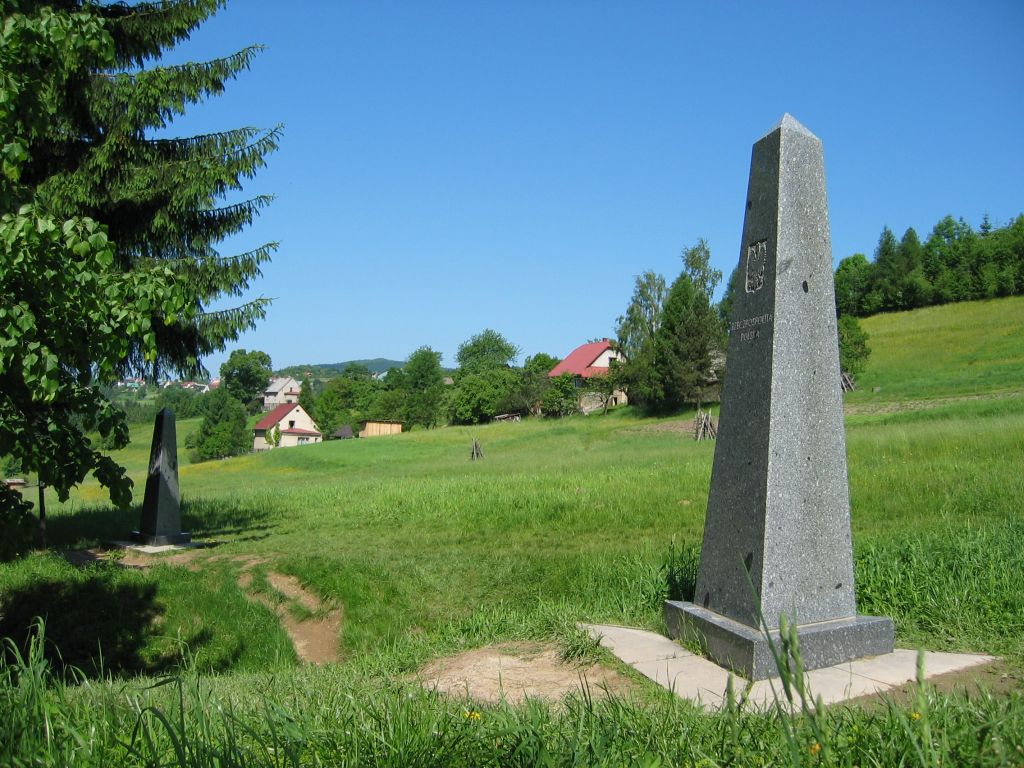Near a village called Hrčava, located in the area of Těšín Beskydy Mountains, we can find a place where borders of three countries meet: the Czech Republic, Poland and Slovakia, the so-called Beskyd Tripoint.

The Tripoint near Hrčava is a special place, as from the top of a mountain of 606 m above the sea level, we can admire the panorama of all the three countries. The Tripoint is different from all other similar places, as well. It is marked with a shared border post, border bridge, two arbours and three obelisks standing on a triangular base. The Czech and Polish obelisks stand at a distance of 15.05 m from each other. Their distance forms the base of an isosceles triangle, the ends of which stand, in turn, at the same distance from the Slovak obelisk, that is, 73.80 m. The shared border post in the riverbed is located exactly in the vanishing point of the three borders (the official Czech name is Trojstátní), that is, in the middle of a circle escribed by the three obelisks.
In the Hrčava region, there are also other interesting places worth visiting. These include, for example, a wooden church dated back to 1936, Masaryk School in a log house from 1924, with a plaque commemorating the visit of Václav Havel 15 June 1993, the grave of the Hrčava patroness, Anna Hlaváčova, grandmother of Jana and Dana Hlaváč, the spot where the last wolf in the Beskydy Mountains was shot (VLK 1914), a natural monument – beech – which is likely to com from an original fir-beech forest, a natural lake – U Hajdušonky – which is only a few dozen cm deep, and folk architecture with log houses. It is also worth mentioning a small village museum and a Lourdes Cave with a spring.
Residents of Hrčava, called a “Little Prague” because of pure Czech population, are proud of their village. Although the real, big Prague treated them barely as an island of civilization somewhere in the far east, their national consciousness is admirable.